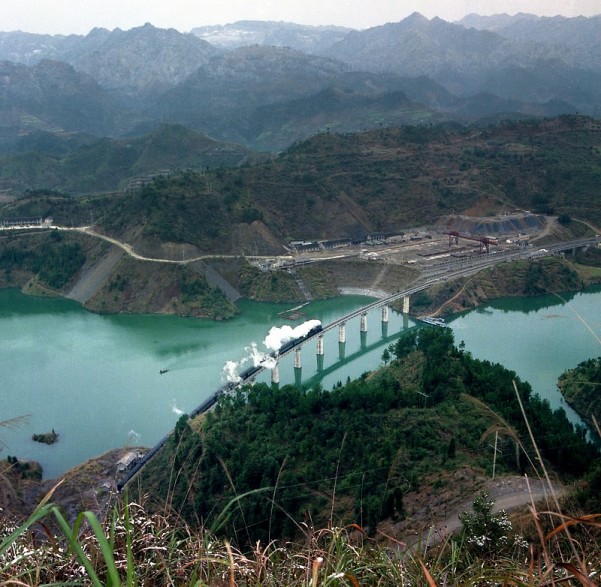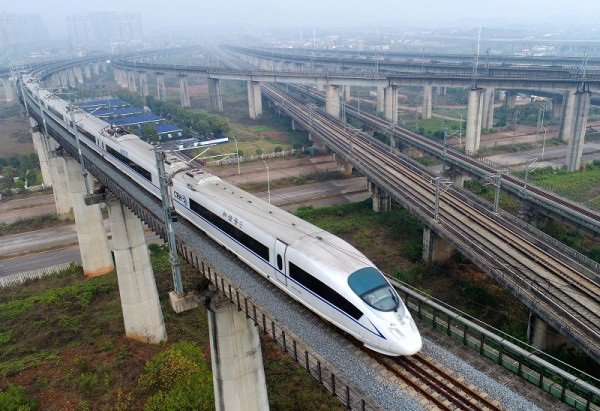
The photo taken in the 1970s shows a steam locomotive pumping out clouds of white smoke while passing over a bridge on the Hunan-Jiangxi Railway. (File photo/Tang Dabai)

The photo taken on December 13 shows that a CRH train runs on a viaduct. The Beijing-Guangzhou and Shanghai-Kunming High-speed Railways form a " High-speed Railways Golden Cross" in Changsha. It has become a “golden” hub on the China's High-speed Railway map. (Photo/Guo Liliang)
In 1978, before reform and opening up, steam locomotives were the primary Chinese railway transport vehicle for cargo transportation. Speeds were slow. After 1978, with a growing market economy and increasingly frequent population movements, trains became the main means of transportation. In the past 40 years, great changes have taken place in transportation, from the steam, diesel, and electric locomotives to today’s CRH Electric Multiple Unit trains and high-speed trains. Speeds have increased from tens of km/hr to more than 300 km/hr. The public has welcomed this more efficient and convenient transportation era, the high-speed railway era, which allows them to travel "thousands of kilometers per day".
By the end of 2017, China's total high-speed railway mileage reached 25,000 kilometers, accounting for 70% of the global total high-speed network mileage, ranking first in the world. There are three high-speed railway lines in Hunan Province: Beijing-Guangzhou, Shanghai-Kunming, and Hengyang–Liuzhou. Ten cities and prefecture have set up high-speed rail stations for these lines passing through Hunan. There are other high-speed rail projects under construction, such as Zhangjiajie-Jishou-Huaihua, Qianjiang-Zhangjiajie-Changde and Changde-Yiyang-Changsha. The Huaihua-Shaoyang-Hengyang Railway will be open to traffic at the end of December.
This article is from Hunan Provincial Government. www.enghunan.gov.cn.
Translator: Shang Dingqiang
Chinese source: hunan.gov.cn








